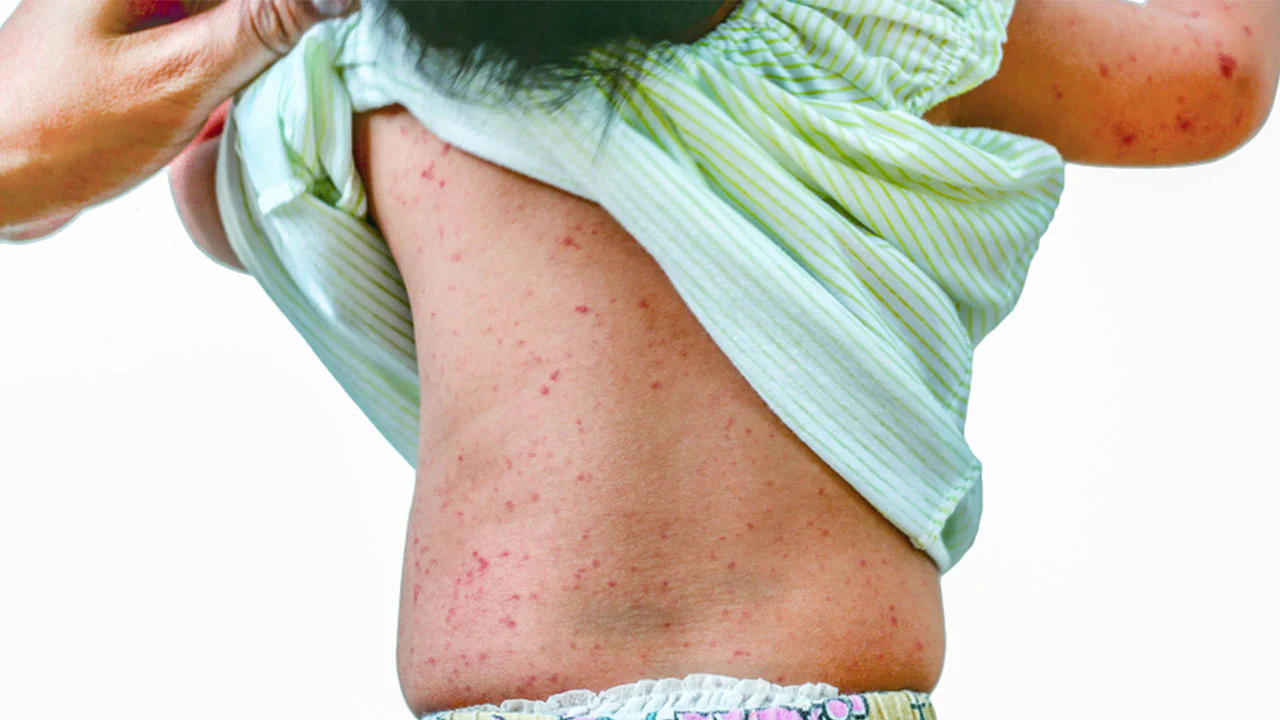
DiYES International School – Roseola in Children is a common viral illness seen in infants and toddlers. It usually affects children between six months and two years. The illness often begins suddenly with a high fever. Parents may feel alarmed by the rapid onset of symptoms. However, most cases of roseola resolve without complications. The virus responsible is typically human herpesvirus 6 (HHV-6). In some cases, HHV-7 may also cause the illness. Roseola spreads through saliva and respiratory droplets. Therefore, close contact can lead to transmission. Understanding its symptoms and care can help reduce anxiety for caregivers.
Roseola starts with a sudden, high fever. The fever often reaches 39°C to 40.5°C. It may last for three to five days. During this time, children may seem irritable or tired. Some may also lose their appetite. Mild cold-like symptoms can appear with the fever. These include sore throat, runny nose, and swollen eyelids. Seizures can sometimes occur due to the rapid rise in temperature. After the fever subsides, a rash usually develops. The rash consists of small pink spots or patches. It typically begins on the chest, back, and abdomen. Then it may spread to the neck and arms.
“Read about: Supporting Children with Diabetes: Special Attention for a Healthier Future”
Roseola is caused by a virus. Human herpesvirus 6 is the most common culprit. Sometimes human herpesvirus 7 may be responsible. The virus spreads through saliva and respiratory secretions. Infected children can spread the virus before symptoms appear. Transmission can occur during kissing, coughing, or sharing utensils. Adults may carry the virus without symptoms. As a result, they can unknowingly transmit it to children. Once a child recovers, lifelong immunity is usually developed. However, reinfection is rare but possible.
Doctors diagnose roseola based on symptoms and history. Blood tests are rarely required. A rash following a high fever is a strong indicator. The fever’s sudden drop before the rash is another clue. Diagnosis may be delayed until the rash appears. In most cases, the illness is confirmed without lab testing. Serious complications are rare and typically do not occur. A full physical exam helps rule out other conditions. Therefore, accurate observation is essential.
There is no specific cure for roseola. The virus must run its course. Treatment focuses on symptom relief. Paracetamol or ibuprofen helps reduce fever. Always follow dosage instructions carefully. Aspirin should never be given to children. Cool compresses may offer comfort during high fever. Encourage fluid intake to prevent dehydration. Dress the child in light, breathable clothing. Rest is also important for recovery. Antibiotics are not effective against viral infections. Therefore, they should not be used for roseola.
In most cases, roseola can be managed at home. However, seek medical help if seizures occur. A persistent high fever may also require evaluation. If the rash worsens or does not fade, consult a doctor. Children with weak immune systems may face complications. Therefore, extra care is needed in those cases. Trust your instincts as a caregiver. If something feels wrong, contact a healthcare professional.
Comfort and care are vital during roseola recovery. Create a calm and restful environment. Keep the child hydrated throughout the illness. Offer easily digestible foods if appetite returns. Monitor the fever regularly using a thermometer. Avoid sending the child to daycare during illness. This helps prevent the virus from spreading. Use clean utensils and personal items. Wash hands frequently to stop transmission. Toys and surfaces should also be cleaned often. Provide reassurance to the child during discomfort.
No vaccine exists for roseola. Prevention relies on good hygiene habits. Teach children to cover their mouth when sneezing. Avoid sharing food and drinks during illness. Isolate sick children from healthy ones when possible. Regular handwashing can reduce virus transmission. Caregivers should also practice hygiene routines. Disinfect commonly touched objects and toys. Although transmission can’t always be avoided, risk can be minimized. Early recognition also helps reduce spread in group settings.